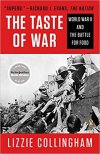Conscript the unemployed in 1938 for compiling lists of skilled workers withheld from conscription and volunteering, and building FAA standard airfields, naval shadow factories and more large slips. Well fed building work will beef up the possibles. Welding courses.
Why not go with training that is dual purpose so if war does not arrive would still have civilian benefit?
Lower Tech
1. Tool & Die
2. Welding
3. Electrician
4. Agricultural Machinery Operator and Repair*
Higher-Tech
1. Metallurgy
2. Chemistry
3. Mechanical Engineering
4. Electrical Engineering
5. Agricultural Machinery Design*
*- The caveat for these is the more the UK can make itself self-sufficient in food production, the less it needs to rely upon importing from foreign sources

